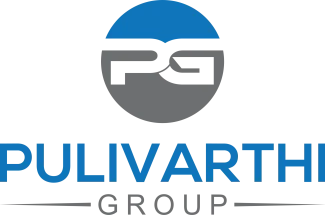Hire Physical Therapist
A Physical Therapist (PT) restores function, reduces pain, and prevents re-injury—thereby driving measurable gains in mobility, safety, and quality of life. Because PTs combine examination, differential movement diagnosis, and evidence-based interventions, they are essential across acute care, outpatient orthopedics, neuro rehab, pediatrics, sports, home health, and occupational health. Consequently, organizations that hire a Physical Therapist strategically improve outcomes, shorten length of stay, and expand capacity without compromising care.
Why Hire a Physical Therapist?
Hiring a PT is not simply about adding clinical minutes; rather, it is about integrating movement science into every stage of recovery. Because PTs evaluate impairments and activity limitations while setting functional goals, they translate medical plans into practical, patient-centered progress. Moreover, they mentor aides, coordinate with physicians, and close communication loops with nursing, which, in turn, improves throughput and satisfaction.
- Better Functional Outcomes: PTs deliver graded therapeutic exercise, manual therapy, and neuromuscular re-education; therefore, gait, balance, and ADL performance improve quickly and sustainably.
- Shorter Length of Stay: Early mobilization protocols reduce complications; consequently, discharge targets are met more consistently.
- Lower Readmissions & Re-injury: With patient education and home programs, PTs mitigate fall risk and prevent recurrence—especially after orthopedics or neuro events.
- Enhanced Interdisciplinary Care: Because PTs coordinate with OT, SLP, nursing, and case management, handoffs become cleaner and plans more coherent.
- Operational Efficiency: Optimized scheduling, triage criteria, and standardized pathways reduce idle time and maximize therapist productivity.
Types of Physical Therapists
Since patient populations and settings vary widely, PT roles specialize to meet program goals. Accordingly, aligning subspecialty with your caseload accelerates results and improves staff fit.
Acute Care PT
Mobilizes patients in ICU and med-surg; thus, deconditioning, DVT risk, and delirium decline while discharge planning improves.
Outpatient Orthopedics PT
Manages musculoskeletal pain, post-op rehab, and return-to-sport; meanwhile, objective measures (ROM, MMT, PROMIS) guide progression.
Neurologic PT
Focuses on stroke, TBI, SCI, MS, and Parkinson’s; consequently, balance, gait symmetry, and motor control improve through task-specific practice.
Geriatric PT
Reduces fall risk and frailty via strength, power, and balance programs; additionally, home safety and device training support independence.
Pediatric PT
Addresses motor milestones and developmental conditions; therefore, participation at school and home increases through family coaching.
Sports & Performance PT
Applies load management, return-to-play testing, and injury prevention screens; as a result, athletes progress safely and objectively.
Pelvic Health PT
Treats pelvic floor dysfunction across genders; moreover, pain, incontinence, and postpartum recovery improve with evidence-based protocols.
Home Health PT
Delivers rehab in the patient’s environment; accordingly, adherence rises and readmissions drop.
Occupational Health/Industrial PT
Implements ergonomic programs and return-to-work pathways; consequently, injury rates and lost time decrease.
Travel/Locum PT
Covers seasonal surges and leaves; thus, access remains steady while permanent hiring proceeds.
Where to Find Physical Therapists
Although demand remains high, a structured sourcing plan shortens time-to-fill. Therefore, use multiple channels simultaneously and standardize your screening scorecard.
- Professional Associations: Post and network through APTA sections (orthopedics, neuro, geriatrics, pediatrics).
- Accredited Programs: Build pipelines with DPT programs accredited by CAPTE for new-grad cohorts and residencies.
- Licensure/Exam Resources: Confirm NPTE history and jurisdiction via FSBPT.
- Job Boards & Social: Indeed, LinkedIn, and niche PT communities can scale outreach; nevertheless, pre-screen for setting fit and documentation systems.
- Specialized Staffing: Pulivarthi Group pre-vets PTs for outcomes, documentation quality, and culture fit—so you review calibrated shortlists, not long lists.
Hiring Challenges (and How to Solve Them)
Talent scarcity, documentation complexity, and productivity pressure complicate PT hiring. However, a transparent process with work samples and objective metrics reduces mis-hire risk.
- Setting Mismatch: Clinic skills may not translate to ICU or home health; accordingly, require scenario responses and de-identified notes from relevant settings.
- Productivity vs. Quality: Over-weighting units/hour invites burnout; therefore, balance expectations with outcomes and patient satisfaction.
- EMR Proficiency: Inefficiency in documentation delays throughput; thus, test with a timed mock note.
- Retention Risk: Schedule volatility drives churn; consequently, protect admin blocks and offer predictable templates.
- Regulatory Nuance: Payer and state rules vary; hence, verify Medicare familiarity and supervision rules for assistants/aides.
Qualifications & Licensure Checklist
To practice legally and safely, PTs must meet education, exam, and state requirements; likewise, many roles require additional clearances and CE.
- Doctor of Physical Therapy (DPT): From a program accredited by CAPTE.
- NPTE Passage & State License: Verified via FSBPT and your state board.
- CPR/BLS (and ACLS for acute): Up-to-date emergency certifications.
- Background Checks & Immunizations: Health system or school requirements as applicable.
- Continuing Education: Maintain CE for license renewal; consider APTA residencies and board certification (OCS, NCS, GCS, SCS).
Sample Physical Therapist Job Description (Copy & Adapt)
Use this template, then tailor caseload, setting, and documentation systems (e.g., Epic, Cerner, WebPT) to your environment.
Job Title: Physical Therapist (PT)
Overview:
Deliver evidence-based physical therapy across (acute/outpatient/home health) settings to restore function, reduce pain, and prevent re-injury.
Key Responsibilities:
- Perform examination, evaluation, and movement diagnosis; set functional goals.
- Develop and progress individualized plans of care using objective measures.
- Document thoroughly in EMR; meet payer and regulatory requirements.
- Educate patients/caregivers on HEP, fall prevention, and device use.
- Collaborate with MD/DO, RN, OT, SLP, and case management for safe discharge.
- Mentor PTA/aides; participate in QA and outcome tracking.
Qualifications:
- DPT from CAPTE-accredited program; active state license; BLS/CPR.
- Proficiency with (your EMR); strong communication and patient education skills.
- (Preferred) Specialty experience: ortho, neuro, pelvic, geriatrics, sports.
Physical Therapist Interview Questions (and What You’re Measuring)
- “Walk me through your evaluation for a post-op TKA on POD#1.” — Clinical reasoning and acute safety judgement.
- “Show a de-identified progress note and outcome measures you rely on.” — Documentation quality and objectivity.
- “How do you progress balance training for high fall-risk patients?” — Evidence use and risk management.
- “Describe a time you improved throughput without sacrificing care.” — Systems thinking and collaboration.
- “Which strategies help patients adhere to HEP?” — Education skill and motivational interviewing.
When Should You Hire a Physical Therapist?
Hire proactively when referrals surge, waitlists form, or LOS targets slip. Additionally, program launches (pelvic health, vestibular, sports), new payer contracts, or seasonal orthopedics waves justify immediate PT capacity. Ultimately, early hiring prevents throughput bottlenecks and protects outcomes.
How to Evaluate PT Skills (Beyond the Resume)
Because titles seldom convey depth, require structured samples. Therefore, standardize scoring to compare candidates fairly.
- Work Samples: De-identified eval + progress note with goals tied to measures.
- Practical Scenario: 10-minute case on acute mobility with lines/tubes or complex outpatient pain.
- Gait/Transfer Demo (verbal): Safe technique, cueing, and device selection.
- HEP Design: Patient-friendly program with progression criteria.
Assessing Cultural Fit
Culture determines sustainability; consequently, align on teamwork, patient dignity, and continuous improvement. Likewise, clarify documentation cadence and productivity standards to avoid surprises post-hire.
- Situational Prompts: “Nurse reports hypotension during mobilization—what’s your decision path?”
- Values & Communication: Patient-first language, empathy, and clear inter-team updates.
- Growth Mindset: Interest in CE, residencies, or specialty certification.
Physical Therapist Compensation (U.S. Benchmarks)
Salaries vary by region, setting, and shift; nevertheless, total rewards often include CE funds, licensure reimbursement, productivity incentives, and relocation or sign-on bonuses. Furthermore, flexible scheduling and manageable productivity targets strongly influence retention.
For current occupational data and pay trends, consult the U.S. Bureau of Labor Statistics.
PT SOPs Worth Formalizing (and How to Build Them)
Standard Operating Procedures reduce variation, support safety, and streamline audits. Therefore, build collaboratively, pilot, and update quarterly.
- Evaluation & Plan of Care SOP: Required elements, timelines, and objective measures linked to goals.
- Early Mobility SOP (Acute): Criteria, contraindications, and line/tube checklists.
- Falls & Injury Prevention SOP: Screening tools, balance progressions, and home safety guides (see CDC falls).
- Documentation SOP: EMR templates, medical necessity language, and payer-specific rules.
- Infection Control & Ergonomics: Safe handling per OSHA and facility policy.
- Discharge & HEP SOP: Criteria, patient education standards, and follow-up touchpoints.
Retention Strategies that Work
Retention begins during onboarding; consequently, design a 30/60/90 plan with precepting, EMR training, and safe caseload ramp. Additionally, protect weekly admin time, offer CE pathways, and recognize clinical wins publicly. As a result, morale rises and turnover falls.
- Predictable Schedules: Limit last-minute changes and weekend drift.
- Professional Growth: Support residencies, board certification, and specialty clinics.
- Balanced Productivity: Pair metrics with quality and patient-reported outcomes.
- Recognition: Case showcases and micro-bonuses for measurable improvements.
Hire Physical Therapists with Pulivarthi Group
Pulivarthi Group delivers pre-vetted PTs aligned to your setting, EMR, and outcome goals. First, we calibrate on case mix, documentation standards, and productivity targets. Next, we assess objective note quality, safety judgement, and patient education skill. Then, we present a concise shortlist mapped to your scorecard. Finally, we support offers, licensure, and onboarding—so you expand rehab capacity confidently and quickly.






